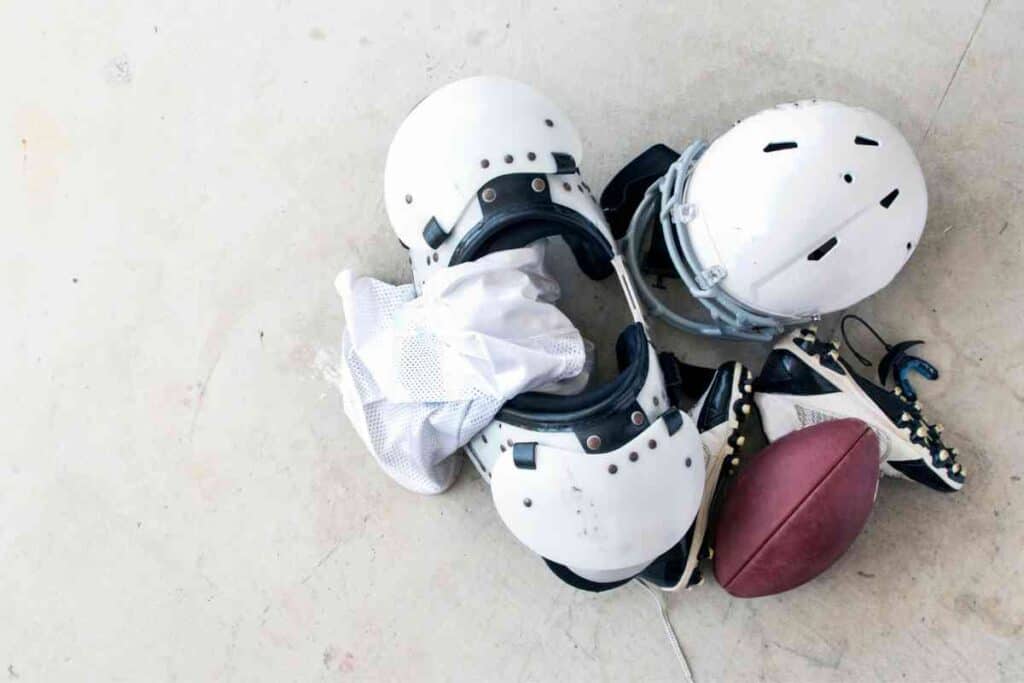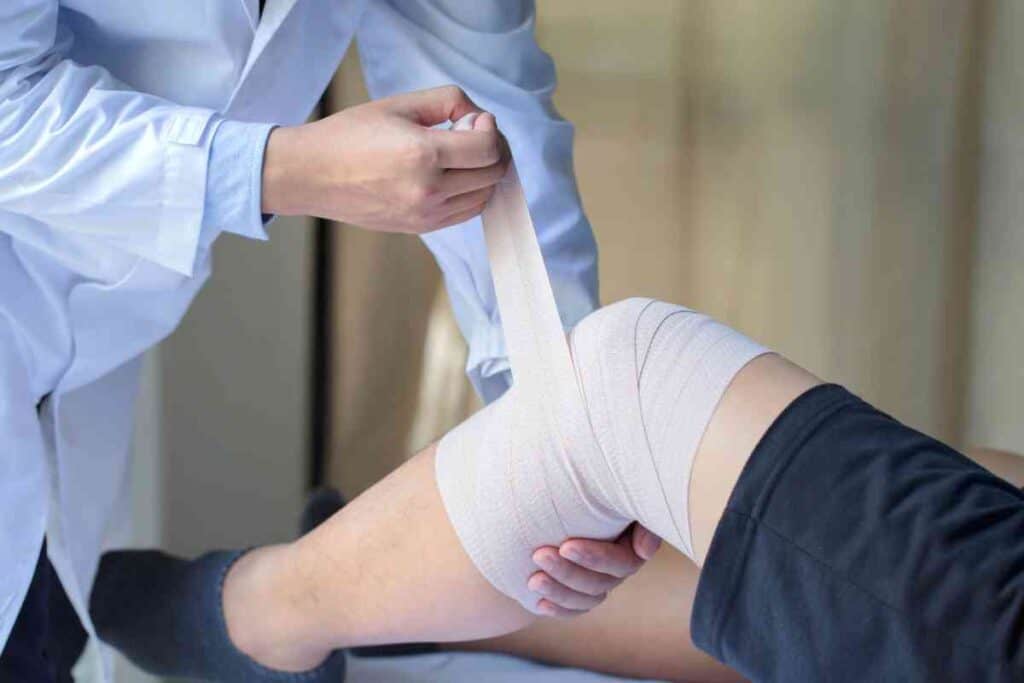Why Don’t College Football Players Wear Knee Pads?
NFL and college football players previously wore knee pads. Why don’t college football players wear knee pads anymore?

Why Don’t College Football Players Wear Knee Pads?
College football players aren’t required to wear knee pads. Many players rightfully believe that knee pads make them run slower while making them less able to move laterally quickly. While many of the same safety concerns are present, most players simply choose to take the risk.
We’ll examine when football players were required to wear knee pads, what made this rule change, and what impact knee pads have on an athlete’s ability to run.
What is a knee pad? Let’s clarify
There is a bit of a difference between the knee pads people put on to protect themselves from pavement while rollerblading, ice skating, or biking, and the pads in football.
The knee pads used in sports on pavement or ice typically have a big plastic outer shell that is meant to prevent impacts and is either fitted to the correct size for the knee or uses adjustable velcro. These knee pads can also be useful in preventing the knee joints from blending and flexing too much.
Even before any rule changes, knee pads in football have typically been a smaller “cup” and fit primarily to protect the knee cap.
Are knee pads required in college?
Yes, but they are more subtle now. Knee pads are now a part of the pans that college football players wear, and they are smaller than normal.
You might even see football and college players wear what are called “short pants” that cover just enough of the knee to be considered pants.
Within the NFL and college, there are a couple of solid reasons – and some not-too-solid reasons, why fewer players choose to wear heavier knee pads:

New safety rules
While knee injuries do happen, they are less common than they used to be. Players are taught different ways to tackle that attempt to topple a player over by hitting their body.
This depends on the player and their abilities, but you’ll notice that there are more penalties for hits on defenseless receivers and the quarterback is much more protected against hits below the waist.
Some new safety rules include outlawing some kinds of blocks that intentionally go below the waist, like a chop block.
Speed
Speed is important in a game where inches count and there is a noticeable difference between running a 4.6-second 40-yard dash and getting a 4.4.
So is the ability to “cut”. Knee pads that hug the knees reduce these abilities and make a player slow down a bit – even more so than the addition of several pounds of other pads and equipment.
They don’t look good
Admittedly, this isn’t the best argument for not using knee pads, or using much more slim versions – but some players like a truly streamlined look.
To be fair, a player who looks sleek is probably a more capable runner. By comparison, look at images of football players in the 1970s and 1980s – clearly bulky pads were in style at some point.
When have rules changed?

While the NFL has been perceived as uncaring about player safety, their adjustments to rules for padding, safety, and technology show the opposite, especially for a rather violent sport.
In 2013, the NFL started to enforce padding rules that coincided with other rule changes in regard to how players were allowed to hit one another.
The rule change involved having college football uniform inspectors ensuring that players were wearing leg and thigh pads. Players who did not comply by wearing proper safety gear would not be allowed to play or fined.
The NFL website also has a quote from a player that is meant to imply that most of the “feeling” of being slowed down by knee pads and leg is mental and that after getting used to a small amount of additional weight, your speed is back.
Whether or not the statement is true is up for debate, but one would think that world-class athletes would want to protect their knees in the contact sport of football instead of risking injury and the potential of losing money.
As of 2018, college football players are also required to wear knee pads. In much of the same spirit as NFL changes, the NCAA acknowledges that playing with knee pads on is safer than playing without.
Making the rule change also helps NCAA players adjust early to the NFL’s knee pads requirements if they do make the NFL.
Traditionally, the NCAA has changed requirements within a few years after the NFL.
What risks does a player take without knee pads?
Big, fast people running at near full speed and colliding often result in injury. A player who takes a college football helmet to the patella (knee cap) has a much higher risk of breaking that bone than a player who has padding that absorbs much of the slow. It will still hurt – but it won’t likely sideline them.
Share Your Thoughts!
Hey, sports enthusiasts!
Did our article resonate with your gameday spirit?
Drop a comment below and share your personal experiences, thoughts, or favorite game day moments. Let’s keep the sports culture conversation alive and kicking!

Key Takeaways
- The belief that knee pads are not required in college football is a little out of date, as rules changed in 2018 to require the use of knee pads
- Players tend to not like knee pads because they believe that the pads either slow them down or don’t look good.
- Knee pads are still helpful in preventing injuries though many new rule changes punish players for making specific types or tackles and blocks that could more easily result in injury.
- The larger change has come from how players wear knee pads as many college football players in skill positions now wear shorter pants with smaller knee pads towards the bottom.
